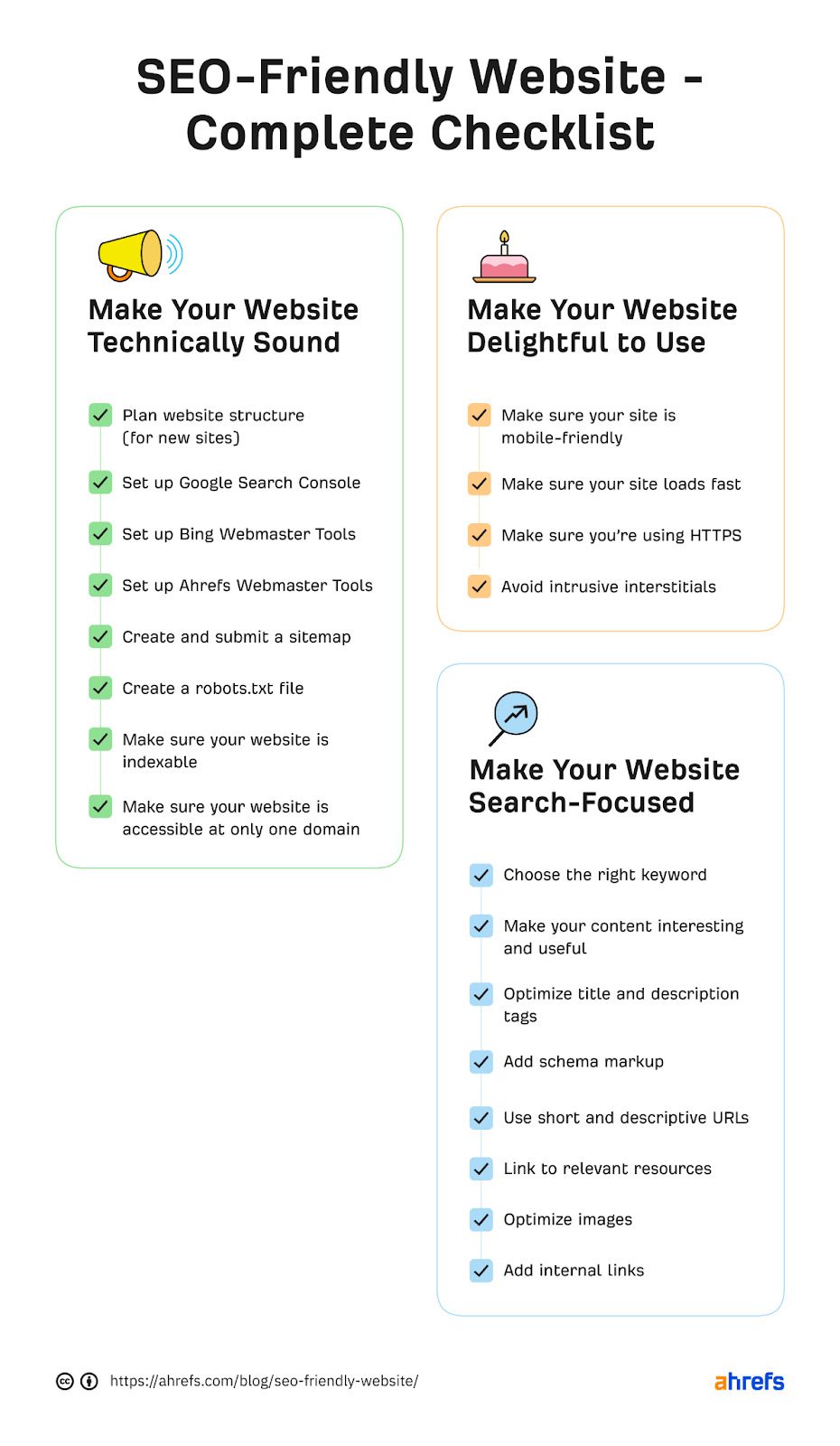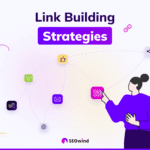
Step-by-Step Guide: Building an SEO-Friendly Website from Scratch
In today’s digital age, having a strong online presence is crucial for businesses looking to reach their target audience. One of the key components of a successful online strategy is building an SEO-friendly website from scratch. By optimizing your website for search engines, you can improve your visibility, attract more organic traffic, and ultimately grow your business. In this step-by-step guide, we will walk you through the process of how to build an SEO-friendly website from scratch, covering everything from choosing the right domain name to optimizing your site for targeted keywords. Let’s dive in and create a website that not only looks great but also ranks well on search engine results pages.
When choosing a domain name for your website, it’s important to select one that is not only memorable and reflective of your brand but also optimized for SEO. One key aspect of an SEO-friendly domain name is including relevant keywords related to your business or industry. This can help improve your website’s visibility in search engine results when users are looking for products or services like yours.
Additionally, keeping the domain name short, simple, and easy to spell can also contribute to its SEO-friendliness. Avoid using numbers, hyphens, or special characters as these can make it harder for users to remember and type in your domain. A clear and concise domain name can help improve user experience and make it easier for potential customers to find and remember your website. By incorporating relevant keywords and keeping the domain name user-friendly, you can create a strong foundation for attracting organic traffic and improving your site’s search engine rankings.
Keyword research is a crucial step in building an SEO-friendly website. It involves identifying the specific words and phrases that people are using to search for information related to your website’s content or products. By understanding these keywords, you can optimize your website to appear higher in search engine results pages and attract more organic traffic.
To conduct keyword research, start by brainstorming relevant topics and terms that your target audience might use to find your website. Use tools like Google Keyword Planner, SEMrush, or Moz Keyword Explorer to discover popular keywords, search volumes, and competition levels. Focus on long-tail keywords – longer, more specific phrases that are less competitive but more likely to drive targeted traffic to your site.
By incorporating these researched keywords strategically into your website’s content, meta tags, headers, and URLs, you can improve your site’s visibility and relevance to search engines. Remember to regularly analyze and update your keyword strategy to stay current with changing search trends and user behaviors.
When creating content for your website, it’s important to focus on providing valuable information that is relevant to your target audience. This means writing high-quality, engaging content that answers their questions and solves their problems. To optimize your content for SEO, you should include relevant keywords that your audience is likely to search for. Conduct keyword research to identify the terms and phrases that are most relevant to your business and incorporate them naturally into your content.
In addition to using keywords strategically, it’s important to organize your content in a way that is easy for both users and search engines to understand. This means breaking up your content into shorter paragraphs, using subheadings to separate different sections, and incorporating bullet points or numbered lists when appropriate. By structuring your content in this way, you can make it more scannable and digestible for readers while also helping search engines better understand the topic of your page. Ultimately, creating high-quality, optimized content is key to improving your website’s visibility in search engine results and attracting more organic traffic.
When building a website from scratch, it’s crucial to implement on-page SEO techniques to help your site rank higher in search engine results. Start by conducting keyword research to identify the terms your target audience is searching for. Use these keywords strategically in your website content, including headings, meta tags, and image alt text.
Optimize your site’s URLs by including relevant keywords and keeping them short and descriptive. Create unique and compelling meta titles and descriptions for each page to entice users to click through from search results. Make sure your website loads quickly by optimizing images, leveraging browser caching, and minimizing code bloat.
Incorporating internal links within your content can improve navigation and help search engines crawl and index your site more effectively. Additionally, optimize your page titles, headings, and content structure to make it easy for search engines to understand the context of your website. By following these on-page SEO techniques, you can improve your website’s visibility and attract more organic traffic.
When building a user-friendly website structure that is also optimized for SEO, there are a few key things to keep in mind. First, make sure your website has a clear and organized navigation system. This means creating a logical hierarchy of pages and categories that are easy for users to navigate through. Use descriptive and relevant page titles and headings to help both users and search engines understand the content of each page.
Next, optimize your URLs by including relevant keywords and keeping them short and easy to read. This will not only make it easier for users to remember and share your URLs but also help search engines understand what your pages are about. Additionally, make sure to create a responsive design that is mobile-friendly, as more and more users are accessing websites on mobile devices.
Lastly, don’t forget to regularly update your content with fresh and relevant information. This will not only keep users engaged but also signal to search engines that your website is active and valuable. By following these simple steps, you can create a user-friendly website structure that is optimized for SEO and will help improve your search engine rankings.
Optimizing your website speed and performance is crucial for SEO success. A fast-loading website not only enhances user experience but also signals to search engines that your site is reliable and valuable. To boost your site’s speed, start by optimizing images and videos to reduce file sizes without compromising quality. Additionally, minify CSS and JavaScript files to streamline code and eliminate unnecessary elements that can slow down loading times. Implementing browser caching and utilizing content delivery networks (CDNs) can also help distribute content more efficiently, further enhancing site performance.
By prioritizing website speed and performance, you can improve your site’s ranking on search engine results pages (SERPs) and attract more organic traffic. Search engines like Google consider page speed as a ranking factor, so a well-optimized website can give you a competitive edge over slower-loading sites. Remember, a faster website not only benefits your SEO efforts but also enhances the overall user experience, leading to increased engagement and conversions. So, make sure to regularly monitor and optimize your site’s speed to stay ahead in the digital landscape.
Utilizing social media for SEO purposes can greatly benefit your website’s search engine rankings. By sharing your website content on popular social media platforms like Facebook, Twitter, and Instagram, you can increase your website’s visibility and drive more traffic to your site. When you share your content on social media, it creates backlinks to your website, which are important for SEO. These backlinks signal to search engines that your website is popular and authoritative, which can help improve your search engine rankings.
Additionally, social media engagement such as likes, shares, and comments can also have a positive impact on your SEO. Search engines like Google take into account social signals when ranking websites, so the more engagement your content receives on social media, the better it may perform in search results. To maximize the SEO benefits of social media, be sure to optimize your social media profiles with relevant keywords and include links to your website in your posts. By consistently sharing high-quality content on social media and engaging with your audience, you can boost your website’s SEO performance and drive more organic traffic to your site.
Generating backlinks from reputable sources is a crucial aspect of improving your website’s search engine optimization (SEO) ranking. Backlinks are essentially links from other websites that direct traffic to your site. When these links come from reputable and authoritative sources, they can significantly boost your website’s credibility in the eyes of search engines like Google.
To generate backlinks from reputable sources, you can start by creating high-quality, valuable content that other websites will want to link to. By producing informative articles, blog posts, or infographics, you can attract attention from other websites looking for quality content to share with their own readers. Additionally, reaching out to industry influencers or other websites in your niche and building relationships with them can lead to natural backlink opportunities.
Overall, the key to success in generating backlinks from reputable sources is to focus on creating valuable content that others will want to link to organically. By building strong relationships within your industry and consistently producing high-quality content, you can attract backlinks from authoritative sources that will improve your website’s SEO ranking over time.
Monitoring and analyzing website traffic and performance is essential for ensuring the success of your online presence. By tracking key metrics such as the number of visitors, bounce rate, and time spent on your site, you can gain valuable insights into how users are interacting with your content. This data allows you to make informed decisions about your website’s design, content, and marketing strategies to improve user experience and drive more traffic to your site.
Regularly monitoring and analyzing website traffic also helps you identify trends and patterns that can inform your SEO strategy. By understanding which pages are performing well and which ones are underperforming, you can optimize your content to better meet the needs of your target audience. Additionally, tracking metrics such as keyword rankings and referral sources can help you identify opportunities for improvement and adjust your SEO tactics accordingly.
In conclusion, monitoring and analyzing website traffic and performance is a crucial aspect of maintaining a successful online presence. By using data-driven insights to optimize your website for SEO, you can attract more visitors, improve user engagement, and ultimately boost your site’s visibility in search engine results.




